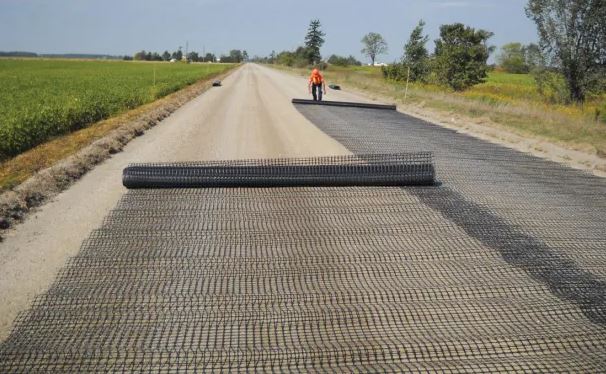
Geotextiles manufacturers in India manufacture fabrics that are utilized in plenty of applications and fields. They are utilized for drainage, soil stability, construction, erosion control, engineering, & clothing.
Usually, geotextiles are made of synthetic materials like polypropylene or polyester – this makes them durable to a full extent.
Their resistance to rot & corrosion is the reason they are being utilized to reinforce roads & guard against erosion when buried underground while geotextile installations.
There is a long list of geotextile fabrics, each used for different purposes; but, woven and non-woven geotextiles are the two most popular basic varieties. In this blog, we are going to highlight how they are different.
Woven Geotextile
As the name implies, coir geotextile manufactured in Indiamanufactures the Woven Geotextile by weaving together slit films. These slit films or tapes are fibrillated flat yarns uniformly woven at the angles of 90-degree. This procedure gives woven geotextile its durability & high load capacity.
By providing reinforcement, separation, & tensile strength, it is suitable for civil applications. In appearance and feel, woven geotextiles are like plastic and are classified by tensile strength, which is the resistance a material has when subjected to tension.
Characteristics of Woven Geotextile
- Reinforcement
- Separation
- High Load Capacity
- Impermeable
- Classified by tensile strength
- Plastic-like
Woven Geotextile Uses
Weaving films or threads together implies that these geotextiles are relatively impermeable, i.e. they are not very porous. As a consequence, they are not ideal for drainage projects.
But, tensile stress makes woven geotextiles the ideal fit for erosion control projects that don’t involve draining & corrosion-resistant projects, & their very high load capacity makes them perfect for airport runways, roads, and parking lot construction. Also, it will resist UV degradation, making them suitable for long-term applications.
Non-Woven Geotextile
By bonding or entangling fibers together, a Non-woven geotextile is produced. Bonding could be either through heat, needle punching, chemical processes, or other methods. There is not any weaving or manual construction involved.
Geogrid manufacturers in India professional manufacturers also say thermal treatment can also be applied to upgrade the strength of the geotextile further; but, they are still more likely to break down faster than their woven counterparts.
Even though non-woven geotextiles are made to utilize synthetic textiles in the same way as woven geotextiles they have a more random structure. Non-wovens’ synthetic properties also make them useful in filter or separation applications. from interior and exterior penetrations, many use them for protecting geomembrane lining systems.
Non-Woven Geotextile Characteristics
- Filtration
- Separation
- Drainage
- Permeable
- Classified by weight
- Felt-like
Non-Woven Geotextile Uses
Due to their ability to permit moisture to pass through, non-woven geotextiles are not as suitable for stabilization or reinforcement projects. Instead, they are well suited to applications concerning drainage, protection, separation, & filtration.
A high water permeability rate also means Non-woven geotextiles do not lose strength over time, especially when utilized below ground. Besides, these geotextiles are easier to cut, making them useful in certain industrial applications.
Here in this blog, we covered the characteristics and uses of woven and non-woven Geotextiles. We hope this write-up will help you to collect more details about the Geotextile. If you have any queries in your mind please share them with us by writing them in the comment section, our support team will revert you as soon as possible.